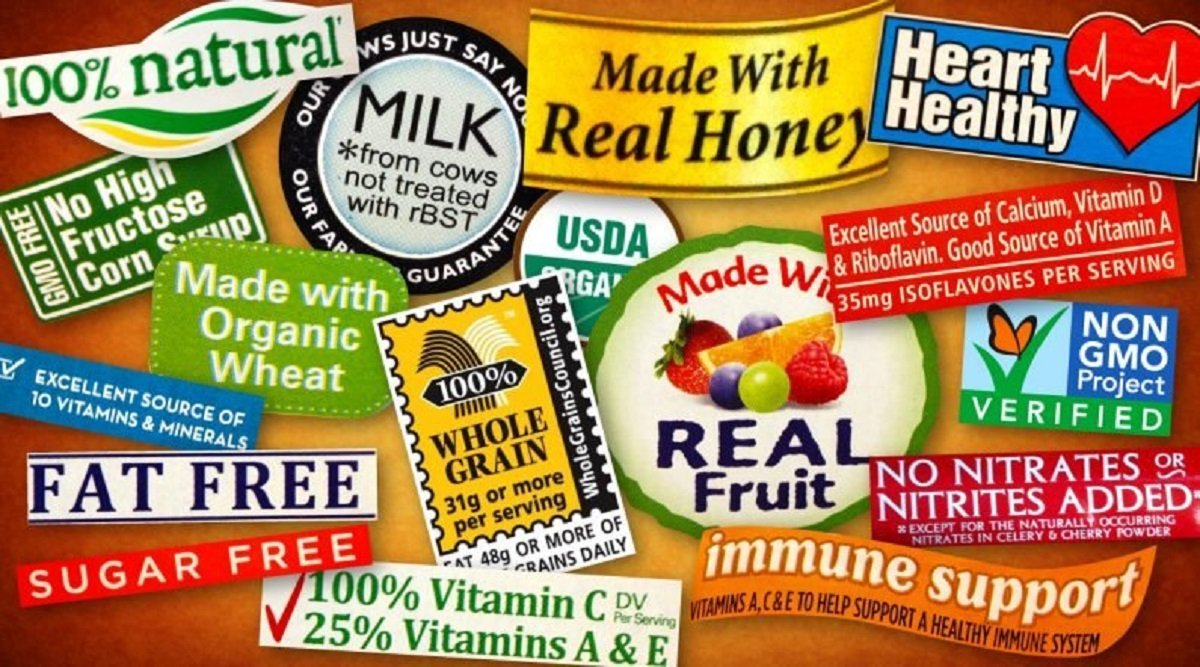THE BASICS
Look for:
● Whole foods
● No more than 5 ingredients
● Food that is close to its original form as possible
● Organic or local if possible
● Minimal or no packaging
Avoid:
● Added sugars
● Other sweeteners
● Hydrogenated and fractionated oils such as corn or palm oil (source of trans fat)
● Additives and preservatives
● Artificial colors (FD&C Blue #1)
● Ingredients you don’t recognize
● More than 5 ingredients
Watch out for:
● “Syrup” – corn syrup, brown rice syrup, agave syrup, etc.
● Words ending in “ose” – sucrose, glucose, fructose, etc.
● Words starting with “malto” – maltodextrin, maltitol, etc.
● “Made with/contains real fruit”
● “Fortified with”
What it really means:
● Natural – Defined by USDA as to not contain artificial ingredients or preservatives and is minimally processed, but it may contain antibiotics, growth hormones and other similar chemicals.
● All Natural – not defined any differently from ‘Natural” by the USDA.
● Organic – Contains 95% of organically produced ingredients. Not produced with antibiotics, growth hormones, pesticides, etc. Tightly regulated by USDA.
● 100% Organic – Made only with organic ingredients.
● Made with Organic Ingredients – Must contain at least 70% organic ingredients
● Cage Free/Free Range – Animals are not contained in any way and allowed to roam. Not tightly regulated so producers have been allowed to keep animals closely confined without cages.
● Grass Fed – Animals are allowed to graze on a range, but can still be contained. Not closely regulated by USDA.
WHAT’S IMPORTANT
Prioritize ingredients over calories. Calories really aren’t that helpful when it comes to nutrition and weight loss. It doesn’t really matter the number of calories, fat and sugar a product has if the ingredients suck. Look for a short list of ingredients you recognize.
If you are comparing two similar items look for more of the things you want (protein and fiber) and less of the things you don’t want (sugar and salt).
Don’t be fooled by what the front of the package says. The more it has to convince you it is healthy the more suspicious you should be. “Organic sugar” is still sugar.
TAKE CAUTION
Labels can be deliberately misleading. Consumers think that if it says it is healthy then it must be, not true! Is a ‘natural’ granola bar that contains high fructose corn syrup what you think of as natural? Probably not. Read your labels, question the claims on the package and if you aren’t sure then put it back!
A food that is ‘low fat’ or fat free may not be low in calories, because they add undesirable ingredients to make up for the flavor and texture of less fat and therefore adds more calories. Marshmallows are fat free, but you don’t see them on the healthy food list!
Also, a food that is ‘low fat’ may have a ridiculously small serving size.
Is ‘low sugar’ really low in sugar? Manufacturers can use other sweeteners besides table sugar and still label it low in sugar, such as:
● Glucose
● High-fructose corn syrup
● Honey
● Molasses
● Rice syrup
● Maltodextrin
Check the serving size! If it says it has 2 servings and is 150 calories per serving, then the whole package is 300 calories. An easy way to eat more than you think you are.
WHAT’S IT ALL MEAN?
What does all this mean? What can you do to ensure you are eating healthy? Go back to the BASICS in this article and review the Look For section. Review my post on Clean Eating.
Basically stick to a diet of foods with little or no packaging, and that are as close to their original form as possible. Eating apples over applesauce, plain Greek yogurt with blueberries over Chobani blueberry yogurt, whole oats over a package of maple brown sugar instant oats. Get the idea?
Haven’t joined my NEWSLETTER yet?
CLICK BELOW to JOIN NOW!



